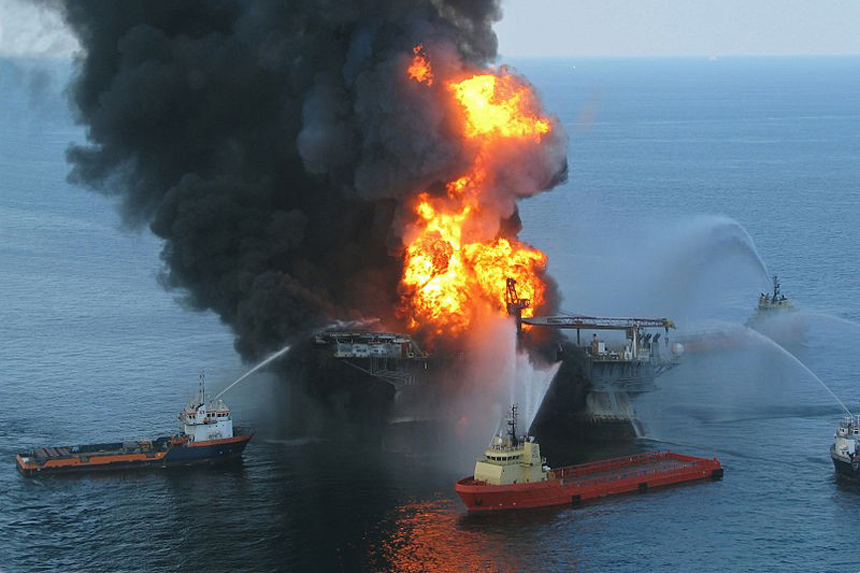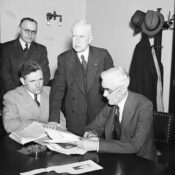The recent government shutdown caused significant upheaval in dozens of federal agencies. One that felt the full brunt of the impact was the United States Coast Guard. The ripples that the shutdown caused in the service made the news, from the lack of pay for its members after their appropriations ran out in December to the fact that activities considered vital to national security continued in the face of that same lack of pay. However, despite being the oldest continuous seagoing service of the country, many Americans aren’t entirely sure what the United States Coast Guard does. Some think of it as a military branch, while others consider it an arm of law enforcement. In fact, it’s both, and a regulatory agency, and quite a bit more. Here are five things you probably didn’t know about the United States Coast Guard.
1. It’s a Military Branch
Created by the Congress in 1790 after a request by Alexander Hamilton, the U.S. Coast Guard is defined as a volunteer branch of the United States Armed Forces. It’s one of seven federal uniformed services, with the others being the U.S. Army, the U.S. Navy, the U.S. Air Force, the U.S. Marine Corps, the U.S. Public Health Service Commissioned Corps, and the National Oceanic and Atmospheric Administration Commissioned Officer Corps; only the Army, Navy, Air Force, Marines, and Coast Guard as considered the “armed forces.” Since 2002, the Coast Guard has operated out of the Department of Homeland Security. Prior to that, it fell under the Department of Transportation from 1967 to 2002. Its original home was the Department of the Treasury. During wartime, the Guard can be transferred to the Department of the Navy by the president or Congress. It’s happened twice, once in each World War.
2. It Does Have a Law Enforcement Directive

While members of the Coast Guard are considered to be in military service (either active or reserve), and their pay works in the same way that other military pay grades work, they are also charged with tasks that place them on a maritime law enforcement beat. Officially, the Coast Guard has 11 missions dating from the Homeland Security Act of 2002:
- Ports, Waterways & Coastal Security
- Drug Interdiction
- Aids to Navigation (ATON: including maintaining the nation’s lighthouses, buoys & VTS; also legacy ATON missions including lightships & LORAN)
- Search & Rescue (SAR)
- Living Marine Resources
- Marine Safety
- Defense Readiness (National Security & Military Preparedness)
- Migrant Interdiction
- Maritime Environmental Protection
- Polar, Ice & Alaska Operations (including the International Ice Patrol)
- Law Enforcement (including Prohibition Enforcement History)
The Coast Guard’s stewardship of ports and waterways ties in directly with their drug interdiction mission — they work to stem the flow of illegal drugs from entering the country. In 2016 alone, the U.S.C.G. arrested 585 suspected drug smugglers and seized over 416,000 pounds of cocaine. Migrant interdiction seeks to prevent illegal immigrants from entering the country over the waters; during the course of 2018, the Coast Guard captured more than 1,000 people trying to enter illegally off the southern California coast.
3. Their Motto Means “Always Ready”
While the Marines’ Semper Fidelis (Always Faithful) is more famous, the Coast Guard’s motto of Semper Paratus reflects their status as an organization that’s regarded as a first responder. The Coast Guard is frequently associated with Search & Rescue (which is one of their 11 missions, but also a hallmark of their excellence in that field).
4. Coast Guard Search & Rescue Is Everywhere

As part of their commitment to readiness for SAR operations in their nine service districts, the Coast Guard has SAR facilities on the East, West and Gulf coasts of the continental United States. Other facilities exist in Alaska and Hawaii, as well as on the Great Lakes and inland waterways. U.S. territories Guam and Puerto Rico also house operation centers. The Coast Guard and the Air Force both send select officers to teach at the National Search and Rescue School at Yorktown, Virginia; the school trains all SAR mission planners and staff. Rescues are facilitated out of a variety of vehicles, notably helicopters and cutters.
Becoming a Coast Guard Rescue Swimmer is one of the most difficult achievements in the U.S. Armed Forces. You basically have to be a champion swimmer (able to handle at least 30 minutes of rough ocean) and an EMT (certified) at the same time. More than 50% of applicants wash out. There’s also a required physical training test each month after you’ve made it; according to Military.com, the test consists of “push-ups, situps, pull-ups, chin-ups, 12-minute crawl swim (500-yard minimum), 25-yard underwater swim and a 200-yard buddy tow.”
The trailer for The Finest Hours.
One of the most famous Coast Guard rescues was documented in the 2016 film The Finest Hours. On February 18, 1952, two different ships had been ripped in half during a nor’easter off the coast of Massachusetts. The first vessel attracted a number of rescue crews, so when the second vessel, the oil tanker SS Pendleton, was damaged, few were left to assist. Petty Officer and coxswain Bernie Webber took a crew of three on an attempt to save the 33 survivors trapped aboard the Pendleton amid raging wind and waves; remarkably, they were able to rescue 32 of the stranded sailors. Webber and the rest of his crew were each awarded the Gold Lifesaving Medal, a rarity since the accolade usually goes to the captain only.
5. They Break the Ice and Protect Marine Life

Among the Coast Guard’s lesser known operations are their “Ice” missions and environmental protection. In the U.S., the Coast Guard deploys vessels to break up ice in waterways like the Great Lakes in order to protect ships. Outside the country, they run U.S.-flagged heavy icebreakers in the polar regions for the same purpose.
On the environmental side, the Coast Guard works with a number of watchdog organizations to keep the waters clean. They cooperate on stopping the spread of invasive species, preventing ocean dumping, and dealing with chemical and oil spills. They also have a directive to defend protected marine life and prevent unauthorized fishing incursions in the waters defined as the U.S. Exclusive Economic Zone.
Feature Image: A U.S. Coast Guard helicopter during rescue operations surrounding the Deepwater Horizon disaster in 2010. (Photo from U.S.C.G. via Wikimedia Commons)
Become a Saturday Evening Post member and enjoy unlimited access. Subscribe now



